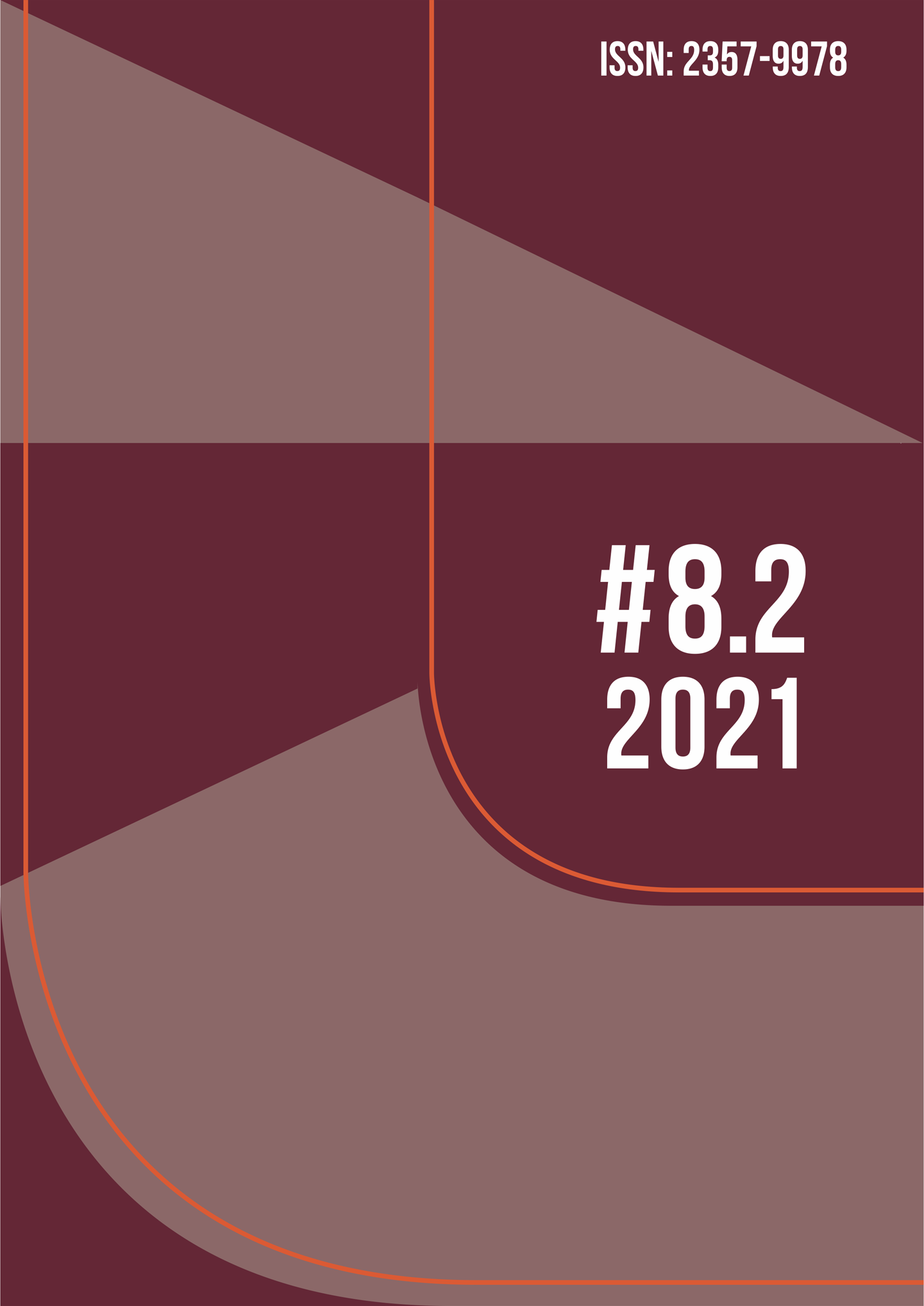Miscegenation of a black butoh: Afro-Brazilian colors in Marco Xavier’s dance
DOI:
https://doi.org/10.36025/arj.v8i2.24230Keywords:
Afro-Brazilian butoh, miscegenation, contemporary dance, Marco XavierAbstract
This essay discusses a set of questions provoked by the work of the Brazilian dancer Marco Xavier, articulated from starting issues woven through a correspondence established between the artist and three researchers of dance and performance field. The dialogue moves around the presence of the black body and Afro-Brazilian spirituality in a dance conceived in a culture of yellow bodies, evoking the themes of miscegenation and resistance face of the necropolitics, discussing approaches and differences between the social, historical and cultural Japanese context – in which the genesis of Butoh occurs through the emergence of a ritualized and violated, inadequate and marginal body – and the historical and religious Brazilian context – within which the black body remains as a body on the margins.
Downloads
References
ABEL, Thiago; ALEIXO, Daniel. Sol e Lama: corpo e morte em Tatsumi Hijikata e Yukio Mishima a partir de Cores Proibidas. Arte da Cena, v. 6, n. 2, ago./dez. 2020. Disponível em: https://www.revistas.ufg.br/artce/article/view/65523. Acesso em: 09/09/2021.
ALISHINA, Juju. Butoh Dance Training. Londres: Singing Dragon, 2015.
ALMEIDA, Silvio Luiz de. Racismo estrutural. São Paulo: Pólen, 2019.
BAIRD, Bruce. Butô: dança da diferença. Ephemera, Ouro Preto, v. 2, n. 2, 2019. p. 1-8. Disponível em: https://periodicos.ufop.br/ephemera/article/view/2221/1679. Acesso em: 25/08/2020.
BEETHOVEN, Ludwig van. Sonata para piano n.º 14 Op. 27 n.º 2 [1801]. Disponível em: https://www.youtube.com/watch?v=YO7D6VRlTo0. Acesso em: 21 ago. 2021.
BOCCI, Diego Segobia. Bairro da Liberdade e a imigração japonesa: a ideia de Bairro Japonês. Cordis: Revista Eletrônica de História Social da Cidade, n. 2, 2009. Disponível em: https://revistas.pucsp.br/index.php/cordis/article/view/9526.
CANCLINI, Néstor García. Culturas híbridas: estrategias para entrar y salir de la modernidad. Buenos Aires: Sudamericana, 1995.
CANEVACCI, Massimo. Transculturalidade, interculturalidade e sincretismo. Concinnitas, v. 1, n. 14, p. 139-143, 2009.
CARBOGIM, Bárbara de Souza. Por uma poética política: tensões entre corpo e presença na dança de Tatsumi Hijikata. 2016. 114 f. Dissertação (Mestrado em Artes Cênicas) – Instituto de Filosofia, Artes e Cultura, Universidade Federal de Ouro Preto, Ouro Preto, 2016.
CARVALHO, Francione Oliveira; ASSUNÇÃO, Matheus; DA SILVA, Karina Pereira. A produção visual de novos artistas afrodescendentes no Brasil e reverberações na formação docente em artes visuais. Aurora: revista de arte, mídia e política, v. 12, n. 36, p. 95-113, 2020. Disponível em: https://revistas.pucsp.br/index.php/aurora/article/view/45288.
CASTRO, Eduardo Viveiros de. Os pronomes cosmológicos e o perspectivismo ameríndio. Mana, v. 2, p. 115-144, 1996. Disponível em: https://doi.org/10.1590/S0104-93131996000200005. Acesso: 09/07/2021.
CUNHA, Andrei dos Santos. A cultura japonesa e a imaginação da catástrofe. Sessão de artigos do website da Fundação Japão. Ensaio publicado em 5 de agosto de 2020. Disponível em: https://fjsp.org.br/estudos-japoneses/wp-content/uploads/sites/3/2020/08/texto-andrei-cunha-v4-laranja.pdf. Acesso: 09/09/2021.
DELEUZE, Gilles. Diferença e repetição. Rio de Janeiro: Graal, 2006.
DELEUZE, Gilles. Espinosa e o problema da expressão. São Paulo: Editora 34, 2017.
FANON, Frantz. Pele negra, máscaras brancas. Salvador: EDUFBA, 2008.
GREINER, Christine. O colapso do corpo a partir do ankoku butô de Hijikata Tatsumi. Issuu, 2005. Disponível em: https://www.japonartesescenicas.org/ankokubutoh.pdf. Acesso em: 14 setembro 2020.
HIJIKATA, Tatsumi. Kinjiki – Cores Proibidas. Espetáculo de dança. Com Tatsumi Hijikata e Yoshito Ohno. Estreia em Tóquio, 1959.
HIJIKATA, Tatsumi. Wind Daruma. TDR, v. 44, n. 1, p. 71-81, Spring, 2000. (Tradução para português feita pelos autores). Disponível em: https://chokohma.files.wordpress.com/2014/09/hijikata-words.pdf. Acesso em: 13/09/2021
KATZ, Helena. Que mistério tem esses japoneses. O Estado de S. Paulo, São Paulo, 05 de abr. de 1988. Disponível em: http://www.helenakatz.pro.br/interna.php?id=9. Acesso em: 21 ago. 2021.
KRENAK, Ailton. Como adiar o fim do mundo – Ailton Krenak. Vídeo no YouTube. Disponível em: https://www.youtube.com/watch?v=4NLcCm9bGrs&feature=youtu.be. Acesso em: 14 setembro 2020.
KUSUNU, Takao; OGAWA, Felícia. O olho do tamanduá. Gomuñiquetan. Versão dia 19-04 - Parte 1/2. Youtube, 2008. 1 vídeo (6 min 50). Disponível em: https://www.youtube.com/watch?v=c9FSAq7O7QM. Acesso em: 21 ago. 2021
KUSUNU, Takao; OGAWA, Felícia. O olho do tamanduá. Gomuñiquetan. Versão dia 19-04 – Parte 2/2. Youtube, 2008. 1 vídeo (6 min.57). Disponível em: https://www.youtube.com/watch?v=Rf3y6bxorXg. Acesso em: 21 ago. 2021.
MBEMBE, Achille. Necropolítica. Trad. Renata Santini. São Paulo: n-1, 2018.
MELLO, Simone Martins. Flutuações do butoh no corpo do artista que dança: poéticas da Mestiçagem. 2013. 150f. Dissertação (Mestrado em Dança) – Programa de Pós-Graduação em Dança, Universidade Federal da Bahia, Salvador/BA, 2013.
MISHIMA, Yokio. Cores Proibidas. Trad. de Jefferson José Teixeira. São Paulo: Cia das Letras, 2002.
MUNANGA, Kabengele. Arte Afro-brasileira: O que é afinal? In: AGUILAR, Nelson (org.). Mostra do Descobrimento: Arte Afro-brasileira. São Paulo: Associação Brasil 500 Anos Artes Visuais, 2000.
MUNANGA, Kabengele. Rediscutindo a mestiçagem no Brasil: identidade nacional versus identidade negra. Petrópolis: Vozes, 1999.
NASCIMENTO, Abdias do. O genocídio do negro brasileiro. Rio de Janeiro: Paz e Terra, 1978.
NASCIMENTO, Beatriz. O conceito de quilombo e a resistência cultural negra. In: RATTS, Alex. Eu sou atlântica: sobre a trajetória de vida de Beatriz Nascimento. São Paulo: Imprensa Oficial, 2006.
ODÉ KILEUY; VERA DE OXAGUIÃ. O candomblé bem explicado: nações Bantu, Iorubá e Fon. Rio de Janeiro: Pallas, 2018.
OHNO, Kazuo. Treino e(m) poema. Trad. Tae Suzuki. São Paulo: n-1 Edições, 2016.
OHNO, Yoshito. Corpo em risco. Entrevista à Inês Bogéa. Folha de S. Paulo, Caderno Ilustrada, São Paulo, quinta-feira, 31 de julho de 2003. Disponível em: https://www1.folha.uol.com.br/fsp/ilustrad/fq3107200318.htm. Acesso em: 02 set. 2021.
OLIVEIRA, Erika Carolina Cunha Rizza de. Diálogos entre o butô e a Dança Pessoal. Dissertação de mestrado. Instituto de Artes. Campinas: Universidade Estadual de Campinas, 2009.
PERETTA, Éden. Diásporas do Corpo de Carne. Ephemera, Ouro Preto, v. 2, n. 2, p. III-VI, 2019. Disponível em: https://periodicos.ufop.br/ephemera/article/view/2220/1678. Acesso em: 21 ago. 2021.
PERETTA, Éden. O soldado nu: raízes da dança butô. São Paulo: Perspectiva, 2015.
PONZIO, Ana Francisca. Cristianismo dá inspiração a Kazuo Ohno. Folha de S. Paulo, Caderno Ilustrada, São Paulo, 21 de maio de 1997.
PRANDI, Reginaldo. Mitologia dos Orixás. São Paulo: Companhia das Letras, 2003.
RIBEIRO, Darcy. O povo brasileiro: a formação e o sentido de Brasil. 2ª ed. São Paulo: Companhia das Letras, 1995.
SERRES, Michel. Filosofia mestiça: le tiers-instruit. Tradução de Maria Ignez Duque Estrada. Rio de Janeiro: Nova Fronteira, 1993.
SERRES, Michel. Novas tecnologias e sociedade pedagógica. Interface, Botucatu, v. 4, n. 6, p. 129-142, Feb. 2000.
SHIMADA, Toshio. O que significa a folha Momiji nas tatuagens japonesas? Webpage. Postagem em 10/09/2020. Disponível em: https://toshioshimada.com/2020/09/10/o-que-significa-a-folha-momiji-%E7%B4%85%E8%91%89-nas-tatuagens-japonesas/. Acesso: 20/09/2021
SUZUKI, Teiiti. A imigração japonesa no Brasil. Revista do Instituto de Estudos Brasileiros, n. 39, p. 57-65, 1995.
UNO, Kuniichi. A gênese do corpo desconhecido. São Paulo: n-1 Edições, 2012.
UNO, Kuniichi. Hijikata Tatsumi: Pensar um Corpo Esgotado. São Paulo: n-1 edições, 2018.
WEIR, Lucy. Abject Modernism: The Male Body in the Work of Tatsumi Hijikata, Günter Brus and Rudolf Schwarzkogler’. Tate Papers, n. 23, Spring 2015. Disponível em: https://www.tate.org.uk/research/publications/tate-papers/23/abject-modernism-the-male-body-in-the-work-of-tatsumi-hijikata-gunter-brus-and-rudolf-schwarzkogler.Acesso em: 21 ago. 2021.
WIKIDANÇA.NET. Tatsumi Hijikata. Verbete de enciclopédia digital. Disponível em: http://www.wikidanca.net/wiki/index.php/Tatsumi_Hijikata. Acesso: 20/09/2021.
XAVIER, Marco. Correspondência eletrônica sobre o butô entre Marco Xavier, Flávio Tonnetti, Sandra Corradini e Simone Mello. Destinatário: Núcleo Cuerpo Fluctuante. Ouro Preto, 20 jun. 2020.
XAVIER, Marco. Pequenos sonhos de folhas vermelhas. Disponível em: https://www.youtube.com/watch?v=PowGBrBgBN4. Acesso em: 31 ago. 2020.
YOKOYAMA, Ana Cristina. O campo onde brotou o butoh: antes do filho, o pai. In: Anais do IV Encontro de Pós-Graduandos em Estudos Japoneses, Anais. São Paulo: FFLCH/USP, 2018.
Downloads
Published
How to Cite
Issue
Section
License
Copyright (c) 2021 Flavio Tonnetti, Sandra Corradini, Simone Mello (Autor)

This work is licensed under a Creative Commons Attribution-NonCommercial-ShareAlike 4.0 International License.

This work is licensed under a Attribution-NonCommercial-ShareAlike 4.0 International (CC BY-NC-SA 4.0) License.
Authors retain copyright, while licensing their work under a Attribution-NonCommercial-ShareAlike 4.0 International (CC BY-NC-SA 4.0) License.


 English
English Português (Brasil)
Português (Brasil)
